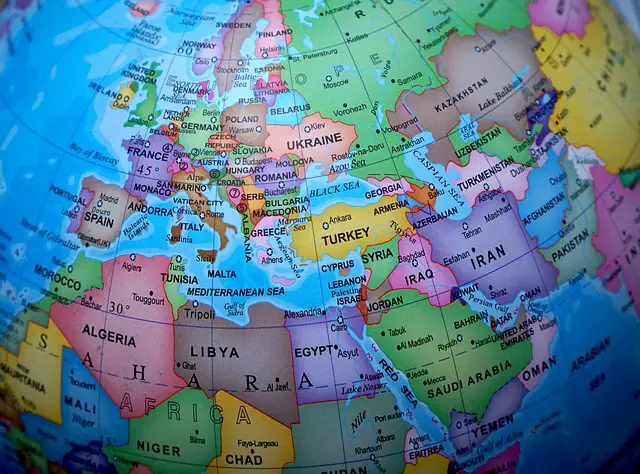Europe is among the top destinations for most travel enthusiasts for many reasons. Whether you have been to Europe or it’s your first time, a little planning ensures you enjoy your vacation. This guide will equip you with 10 essential travel tips for Europe.

Disclosure: Untold Wanderlust contains affiliate links. If you click on these links and make a purchase, we will earn a small commission at no extra cost to you. You can find our full disclosure policy and privacy policy here.
Why Should You Visit Europe?
Depending on your budget and time, you can decide to visit a single country or many European countries. Either way, you will run short of fun while there. To say the least, Europe is rich in history, culture, myriad of sights and wonders, worldwide cuisines, many languages, and natural beauty.
When is the Best Time to Visit Europe?
Europe is a year-round tourist destination. However, the best time to visit the continent narrows down to personal preference. For instance, you can visit during the High season (June to August) to enjoy warm beaches, hiking, road trips, and other adventurous activities. This is also the time when most countries host cultural events, end-of-season fashion sales, and galas.
You can also visit during the low season if you are on a budget (November to April) or the shoulder season (April to June and June to September), which is the best.
How do You Plan a Trip to Europe?
Whether travelling alone or as a group, you must plan the activities you want to engage in during a trip. Essentially, planning requires timeliness to ensure you cover all the tasks. Here are a few examples:
Planning six months in advance: this allows you to choose your destination, read guides, rent a vacation house, and learn a few languages.
Planning three months in advance: You can start booking your flight three months into your planned trip. This includes finding airfare, applying for a passport, and writing your itinerary.
Planning Two months in advance: here, you can arrange where to stay and how to get around.
One month in advance: here, you plan on the remaining details, including money and budget, how much luggage you need, and travel insurance.

How Can You Travel Between the Countries or in the Countries?
In Europe, the rail network is very well developed. Therefore, trains offer a comfortable, sustainable and inexpensive way to travel between countries or within the country. An extremely popular destination in Europe is Italy. There you can rely on good train connections. You can book the trains in advance via Omio. But also Spain, Germany and other European countries have a good rail network.
If you plan to travel between countries or cities, it’s important to start with a rough estimate of your travel budget. Moreover, you need to book your tickets 3 months in advance. Some of the means you can use to travel between countries or cities include budget airlines, travelling by bus, and ridesharing.
Which Things are Important to Know Before You Travel to Europe?
Planning ahead is crucial when visiting overseas, and the first thing you must have is an itinerary. Here are the tips you need to know before travelling to Europe:
Familiarize Yourself with the Areas You are About to Visit
26 European countries do not have border controls. These countries are also known as the Schengen Area and allow you to visit their territories without a visa. However, you can only reside in these countries for a maximum of 90 days within a 180-day period. It means that you can either spend at least 90 days outside the 26 countries or get a visa.
Ensure You Cover the Most Important Activities
Give yourself enough time for travel to ensure you cover everything. Whether you want to visit Bram Dracula’s castle in Bran, Romania, or relax your body in the thermal waters of Budapest. When preparing your itinerary, start by ranking the things you must do, followed by things that are less important during your trip. It allows you to be more flexible during the visit.
Look for the Covering a Significant Part of Your Activities
Look for a route that will allow you to enjoy as many attractions as possible. You can start by plotting your itinerary on a map to ensure it makes the most sense. If it’s not, try and simplify the route as much as possible because all attractions may not naturally fit into one route. To ensure you access everything in your itinerary, visit the attractions that are not on your planned route at the end of your visit.

Consider a Cost-Effective Mode of Transport
Flying is a convenient way to get around Europe, but it is more costly compared to other modes of transport. Travelling by coach train or ridesharing can be a cost-effective option. If you are travelling around coastal regions, you can opt for ferries and boat rides instead of flying.
Budget
Do not plan your journey with an exact amount; always have some extra cash to spend. When making your itinerary, make sure your budget money lasts you throughout your trip.
In most cases, accommodation and food consume a significant portion of your trip budget. For that reason, it’s advisable to consider different transportation methods in the areas you are visiting, including buses, flights, ridesharing, and trains. All these methods vary from one place to the other.
You can also cut the cost of changing currencies if you are travelling from one country to the other by grouping together the countries where Euro payments are accepted. Although Most countries accept Euros alongside their national currencies, many countries in Eastern Europe have their own currencies.
Don’t Overthink It
The main aim of travelling to Europe is to enjoy yourself. It would be best if you don’t cram your itinerary too much to ensure you leverage each destination’s experience. Also, be realistic when researching the accommodation costs and key activities you will find along the way.
Consider Travel Insurance
One of the most important travel tips for Europe is insurance. You can access different types of insurance in Europe. This includes medical insurance, trip cancellation insurance, and flight cancellation insurance. Before choosing any insurance, ensure you know how much money you have paid upfront. Typically, European airlines will sell insurance along with flight or tour packages.
You can get yourself a great deal if you compare different insurance companies in Europe. Finally, ensure you have overseas medical insurance coverage. If not, you can purchase supplemental medical insurance that can cover transportation costs back home in case of an emergency.
Final Thoughts
Once you have everything ready, it’s important to final-check your itinerary to ensure you don’t miss anything. Some of the things to do include calling your credit card companies to inform them you are about to leave. If you are under any medication, ensure you write down the details of your medication, including brand name, dosage, generic name, and usage instructions.
